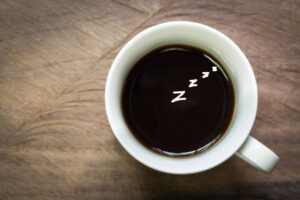Coffee is more than just a beverage; it’s an experience that starts the moment you switch on your coffee maker. For many, understanding the intricacies of their coffee machine, including its power consumption, is part of that experience. This blog post will walk you through everything you need to know about how many watts a coffee maker uses, why it matters, and how it impacts your morning ritual. Whether you’re an eco-conscious coffee lover or someone looking to optimize their kitchen appliances, this guide is tailored just for you.
The Basics of Coffee Maker Wattage
What is Wattage and Why It Matters
Wattage, simply put, is a measure of electrical power. When it comes to coffee makers, wattage determines how much electricity the machine uses to brew your coffee. The wattage impacts not only your energy bill but also the speed and quality of your brew.
Average Wattage of Different Coffee Makers
Coffee makers come in various styles and sizes, each with a different power requirement. On average, a standard drip coffee maker consumes between 750 and 1200 watts. Single-serve pod machines, like Keurig, typically use around 900 to 1500 watts, while espresso machines can range from 1000 to 1500 watts. Understanding these numbers can help you make informed decisions about your coffee habits.
How Wattage Affects Brew Time
Higher wattage generally means faster brewing times. If you’re always in a rush during the mornings, opting for a higher-wattage coffee maker could save you precious minutes. However, this often comes at the cost of higher electricity usage.
Energy Efficiency in Coffee Makers
The Importance of Energy-Efficient Appliances
Energy efficiency is a critical factor for environmentally conscious consumers. An energy-efficient coffee maker not only reduces your carbon footprint but also saves you money on your electricity bill.
Features to Look for in an Energy-Efficient Coffee Maker
When shopping for an energy-efficient coffee maker, look for features like auto shut-off, programmable settings, and an insulated carafe. These features help conserve energy without compromising the quality of your coffee.
Comparing Energy Star Ratings
Energy Star ratings are a good starting point when evaluating the energy efficiency of coffee makers. Appliances with this certification meet stringent energy performance standards set by the Environmental Protection Agency (EPA).
The Role of Voltage in Coffee Makers
Understanding Voltage and Its Impact
Voltage is the electrical potential difference, and it works hand-in-hand with wattage to determine power consumption. Most household coffee makers operate on a standard 120 volts in the United States.
How Voltage Differs Across Regions
Voltage standards can vary by country. For example, in Europe, the standard voltage is typically 220-240 volts. If you’re traveling or purchasing a coffee maker from another country, make sure it’s compatible with your home’s electrical system.
Adapting Coffee Makers for Different Voltages
If you have a coffee maker designed for a different voltage, you might need a voltage converter. Using a coffee maker with the wrong voltage can result in inefficient operation or even damage the appliance.
Understanding Power Usage and Cost
Calculating the Power Consumption
To calculate the power consumption of your coffee maker, multiply its wattage by the number of hours you use it daily. For example, a 1000-watt coffee maker used for 1 hour consumes 1 kilowatt-hour (kWh) of electricity.
Estimating the Monthly Cost
To estimate the monthly cost, multiply the daily kWh by the number of days in a month and then by your local electricity rate. This can give you a good idea of how much your coffee habit is costing you in terms of energy consumption.
Tips to Reduce Power Usage
Simple practices like unplugging your coffee maker when not in use, using the auto shut-off feature, and brewing only the amount of coffee you need can help reduce power usage.
Advanced Coffee Makers and Their Power Needs
High-End Espresso Machines
High-end espresso machines, known for their quality and precision, often have higher power requirements. These machines can use up to 1500 watts or more, especially those with built-in grinders and milk frothers.
Smart Coffee Makers
Smart coffee makers, integrated with Wi-Fi and app controls, also tend to have higher power consumption due to their advanced features. However, they often come with energy-saving modes to offset this.
Commercial Coffee Makers
Commercial coffee makers used in cafes and restaurants have significantly higher wattage, often exceeding 2000 watts. These machines are designed for continuous operation and large batch brewing.
Environmental Impact of Coffee Maker Usage
Carbon Footprint of Coffee Brewing
Every time you brew a cup of coffee, you’re contributing to your carbon footprint. Understanding the power usage of your coffee maker can help you take steps to minimize this impact.
Sustainable Choices for Coffee Lovers
Opting for energy-efficient coffee makers, using reusable filters, and supporting sustainable coffee brands are ways to enjoy your coffee while being mindful of the environment.
Future Trends in Eco-Friendly Coffee Makers
The market is seeing a rise in eco-friendly coffee makers designed to reduce energy consumption and environmental impact. Innovations like solar-powered coffee makers and machines made from recycled materials are becoming increasingly popular.
Troubleshooting Common Power Issues
Identifying Electrical Problems
If your coffee maker isn’t working as expected, it might be an electrical issue. Checking the power cord, outlet, and ensuring the voltage compatibility can often resolve these problems.
When to Seek Professional Help
If you notice frequent power surges or if your coffee maker consistently trips the circuit breaker, it might be time to consult a professional electrician to avoid potential hazards.
DIY Fixes for Minor Issues
For minor issues, such as a faulty power switch or a loose connection, a simple DIY fix might suffice. However, always prioritize safety and consult the user manual before attempting any repairs.
FAQs about Coffee Maker Wattage
How many watts does a typical drip coffee maker use?
A standard drip coffee maker usually consumes between 750 and 1200 watts.
Is higher wattage better for a coffee maker?
Higher wattage can lead to faster brewing times but also higher energy consumption. It’s essential to balance speed and efficiency based on your needs.
Can I use a coffee maker with a different voltage?
Using a coffee maker with the wrong voltage can damage the appliance. Always check the voltage compatibility and use a voltage converter if necessary.
Conclusion
Understanding the wattage of your coffee maker is more than just a technical detail; it’s a step towards optimizing your daily coffee experience and making informed, energy-efficient choices. By selecting the right coffee maker, being mindful of its power consumption, and adopting sustainable practices, you can enjoy your coffee guilt-free.
Ready to explore more about coffee makers and their features? Check out our detailed guides and expert recommendations to elevate your coffee experience.






